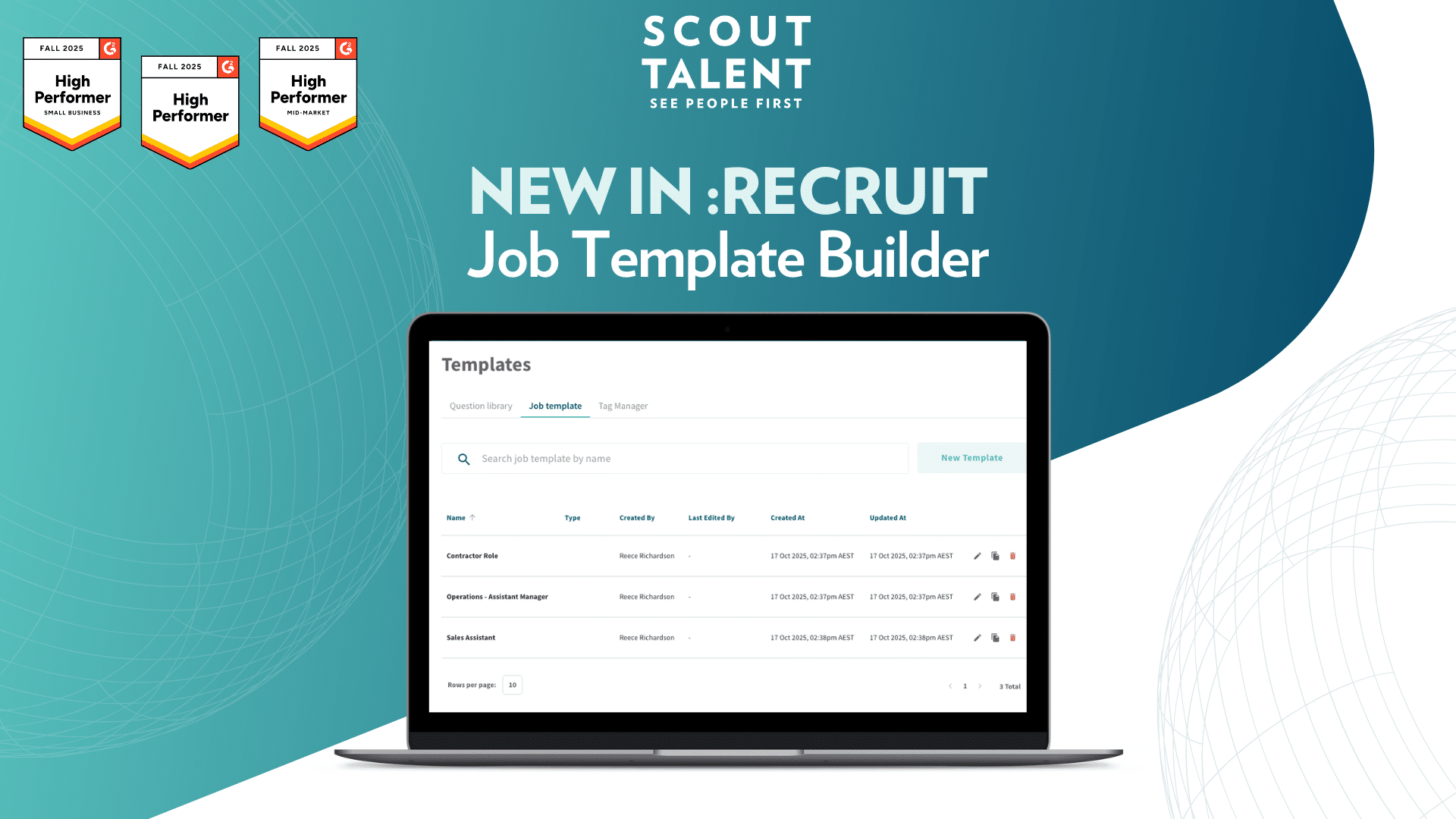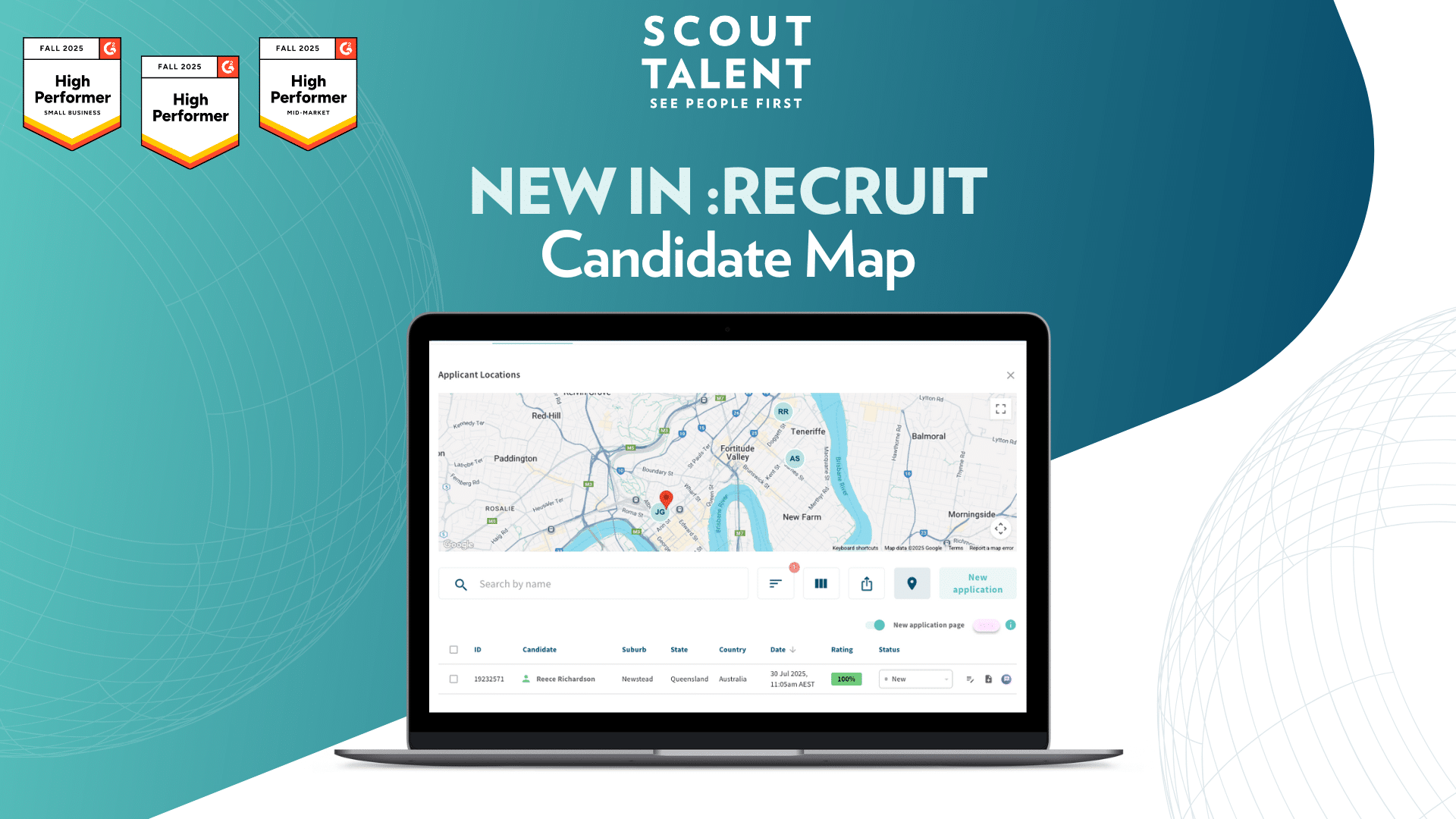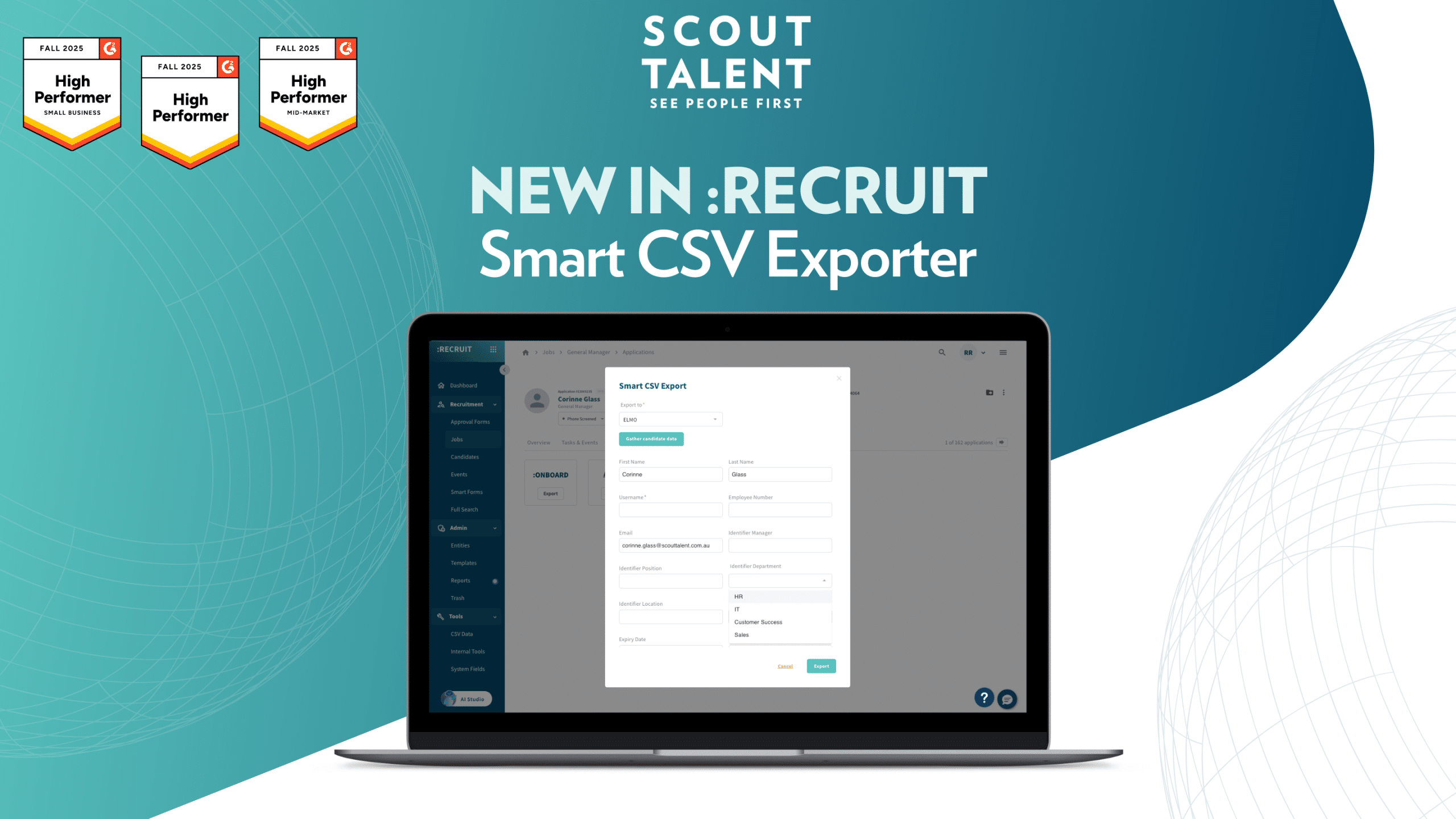What is Employer Branding?
Today we’re going to delve a little bit deeper into some Employer Branding best practices and start to talk more about how to tell your organization’s story. Before we do this, it’s probably best to examine what exactly Employer Branding is. Here at Scout, we would argue that Employer Branding can involve the nice copywriting, the pretty pictures, and the long list of benefits, but it doesn’t stop or start there. Employer Branding in essence is the message you’re trying to get out to your candidates and that message lives in the intersection of what your ideal candidates want to see and who you are as an organization. Which, if you really think about it, means that Employer Branding has its roots in everything – from the policies that dictate how your Employees are allowed to work, right up to the services that you’re offering and the sort of people who excel at offering those services.
The key takeaway is that Employer Branding is not about putting out a positive message of what it’s like to work with you so that every candidate wants to apply with your company. Instead, you should think of it as putting out the right message, so that people who can excel in your organization and help your organization achieve the goals it is striving for, will be the ones to apply.
Finding your message for job descriptions.
As a hypothetical example think about a municipality hiring for a role. Now often strong candidates who apply in this instance will cite wanting to give back to the community as a reason for working with a municipality because typically that is the message you’ll see on a municipality career page. While this may be a great and wonderful aspiration, a lot of roles within a municipality aren’t always public-facing. Perhaps highly analytical and project-oriented people are the ones that you really need, in which case weaving the message of “this is a workplace where we value logic and planning” into your career page instead of “use your skills to give back to a vibrant community” might be more effective at getting you the candidate you’re actually looking for.
Finding the message that accurately reflects who your organization is and what you need most in terms of new people is a large project of work and often the best way to get so reflective on who you truly are as an organization is to work with an external consultant who is free from the constraints of office politics. Once you have that message, your next step is all about weaving that message into all of your recruitment collateral and effectively telling your story with that message in mind.
Telling your Organizations story
There are a number of different mediums you can use to convey your organization’s story, it can be a block of text on a careers page, a short video about your organization that you could use as a paid advertisement on Youtube, or photos of the people who make up your organization. But whatever medium, or combination of mediums, that you use – your message, and the story it tells, needs to be consistent. Because if your candidate is interested they’re likely going to do their homework, and inconsistencies are where your message begins to fall apart and candidates start to question if anything you’re telling them has a shred of authenticity.
Candidate review sites
On the channels that you can control, keep your message consistent. On those that you can’t control, assess where there are conflicts. Your average candidate will read 4 reviews on review sites like Glassdoor or Indeed during the recruitment process with a company; what do those reviews say about you? When a candidate googles your organization what are the first couple of links and news stories that appear. It’s much harder to control your Employer Brand here, but you can assess it to see what it says about you and what inconsistencies it paints in the Employer Brand you’re trying to convey. Depending on who you’re looking for it can even be helpful to take ownership of the negativity that’s out there about your organization – for the right candidate seeing a job description outright say “We’re aware we have a rating of 2 stars on Glassdoor. We’ve taken all of the feedback on board and have developed an action plan to ensure we are an employer of choice. You can see our action plan and timeline by clicking the link here” and then link them to the information that they need to see. That could be a very compelling message for candidates that want to make their mark and are looking for that crown jewel in their career.
Crafting your story
When talking about your organization, don’t just go through the motions but take care and think about what you’re going to say. Starting with a piece that says “Founded in 1980s” is… nice. For some candidates it reads as this is a stable organization to work with which is “good for me because I’m at a point in my life and career where stability is most important to me”. For others this will read as “this is an old organization that is likely unwilling to change”. If you’re looking for dynamic candidates with lots of ideas for change then talking about your legacy isn’t likely going to appeal to them.
That’s just one example but there are countless other sentences that you’ll typically see in a job description thrown in by a tired recruiter who isn’t really aware of what they’re saying. As an example mentioning you’ve got a great company culture but not actually saying what the culture is filler, and meaningless. A positive company culture is all about perspective. Instead be specific, talk about your social events, talk about the things that your people value and how that’s a part of who your organization is. Allow the candidate to decide if this is a good culture or not.
Your location
While we’re speaking somewhat vaguely it is worth mentioning that your location can be part of your story too. If you’re located in a remote location or in one of the cities that everyone wants to live in then that is likely part of your company culture and identity as well. It’s worth investing some time thinking about that so that you’re fully telling your story and not just stating where you are based. In the office In our Scout offices in Vancouver, during the Summer we hike the grouse grind mountain as a team before work. That’s part of our location, our culture, our identity, and our story. It’s worth telling.
Employer Branding and telling your organization’s story are big tasks to undertake, and not ones to undertake lightly. But by starting the work of shifting away from wanting to appeal to every candidate to instead trying to appeal to the ideal candidates for your organization, you will end up with a winning team.
If you would like to know more about how Scout Talent can help you to improve your Employer Branding strategies, call us at 1 866 474 3140 or click the button below.




